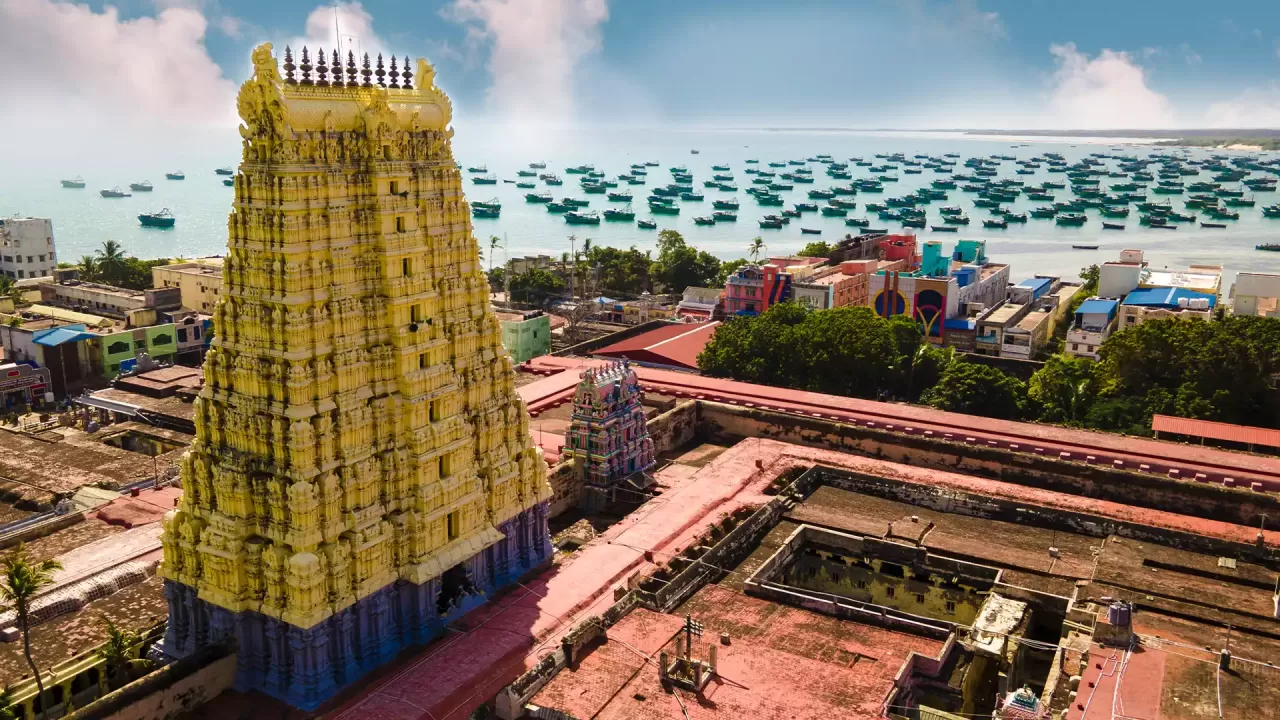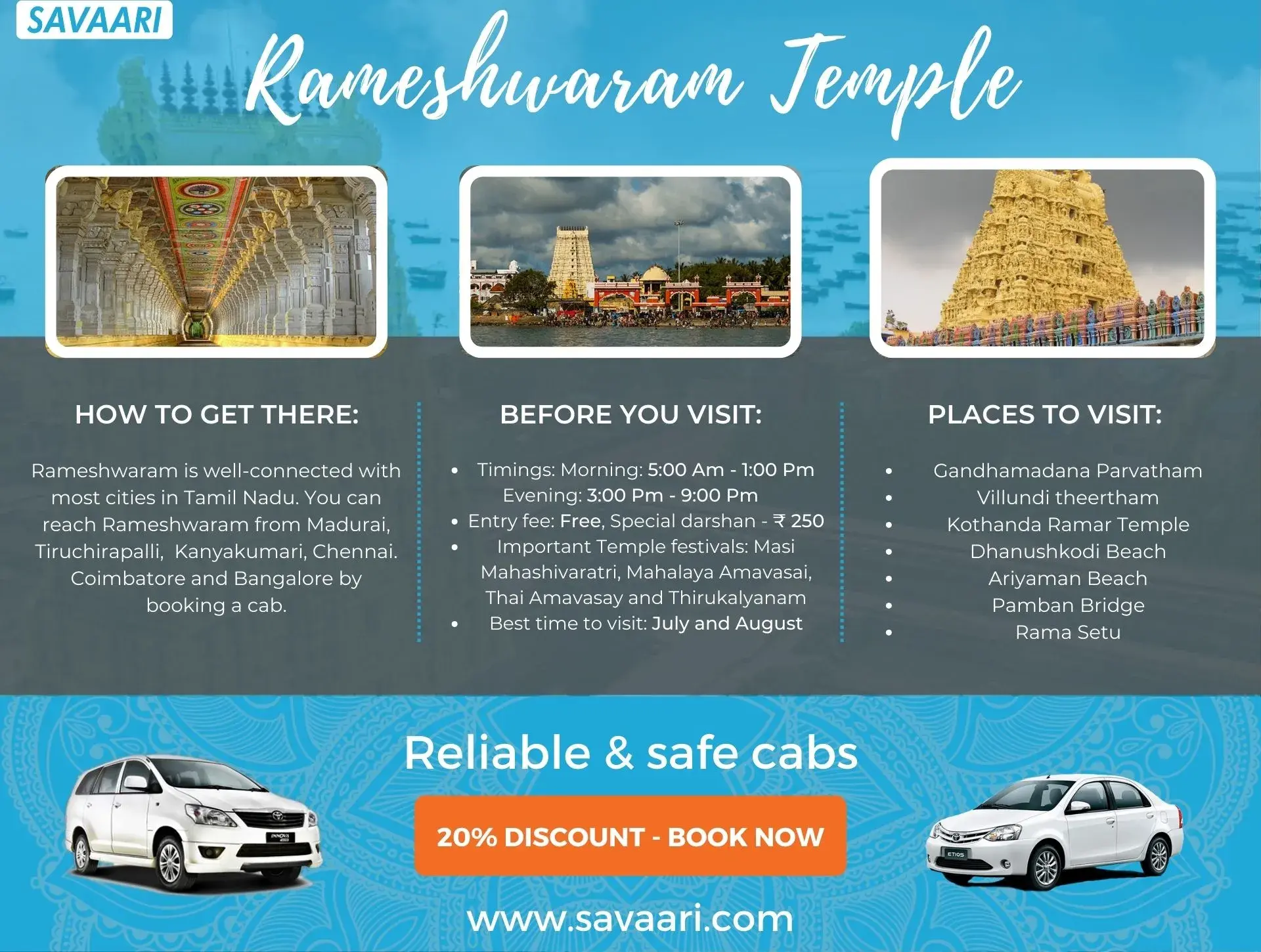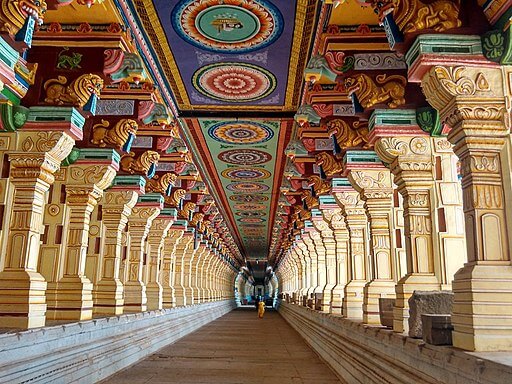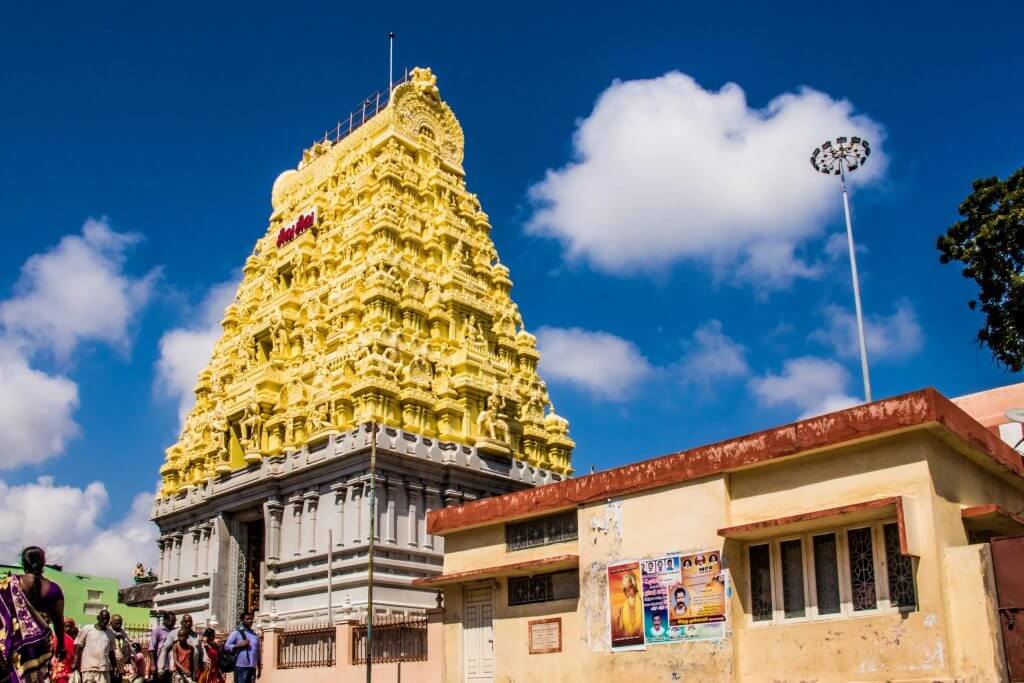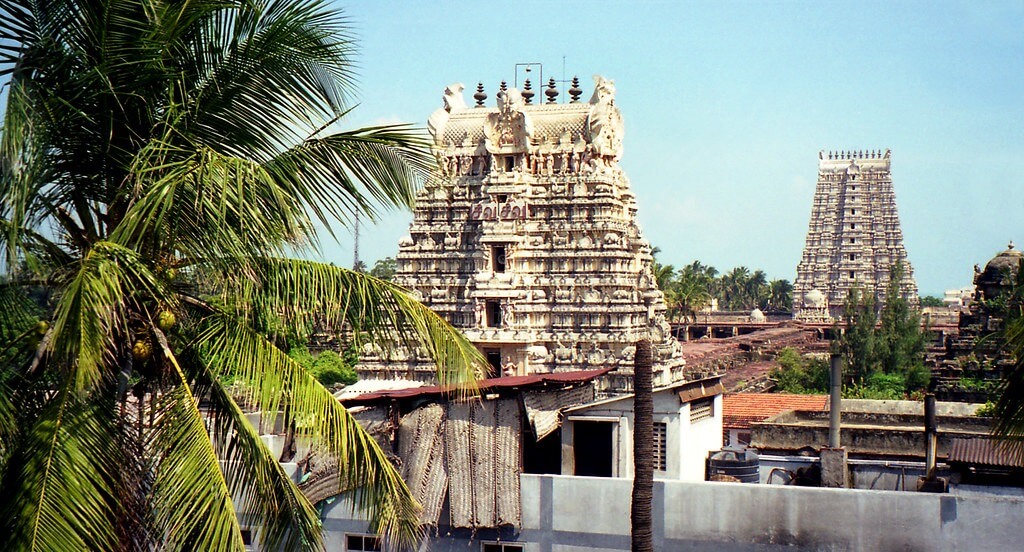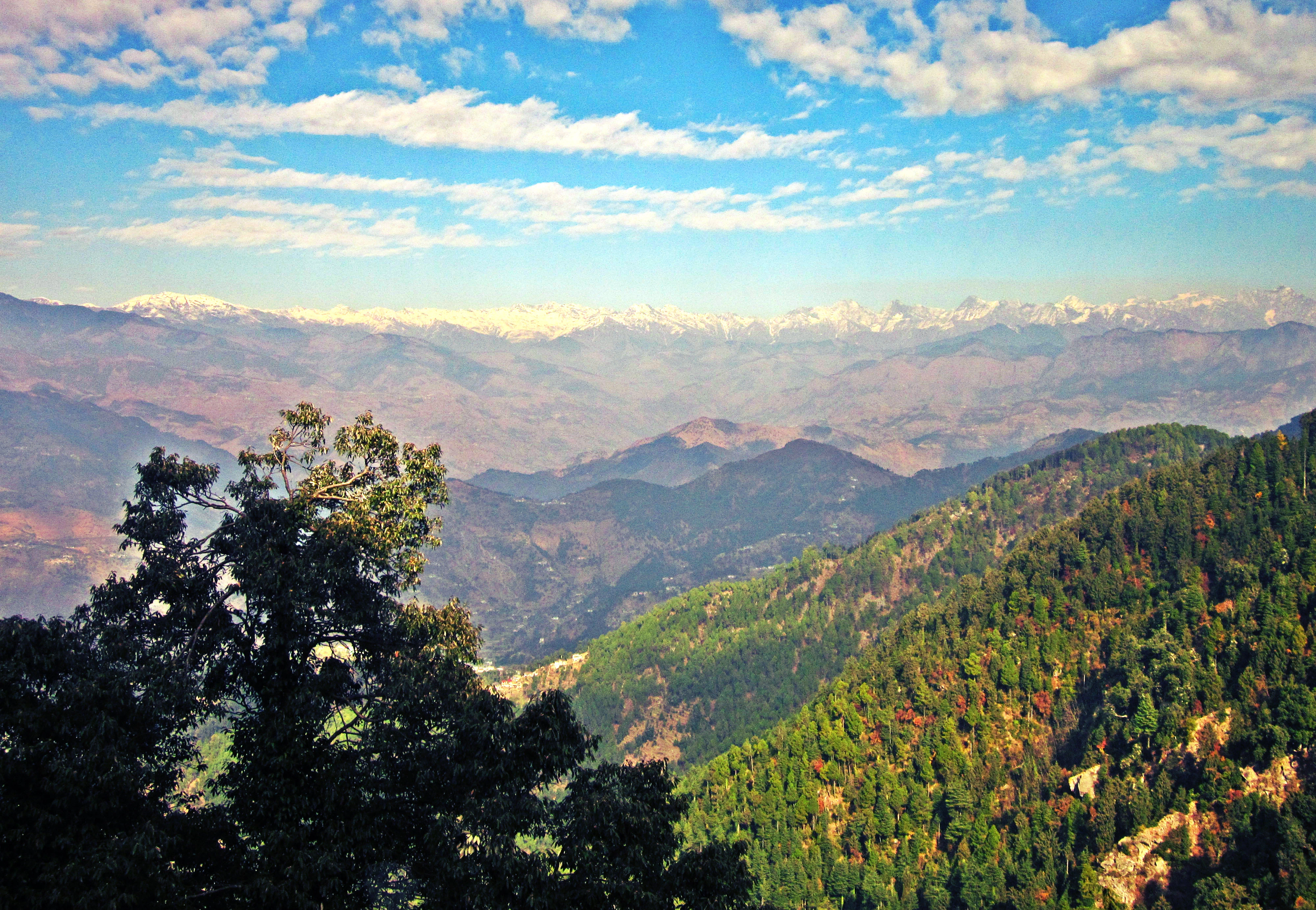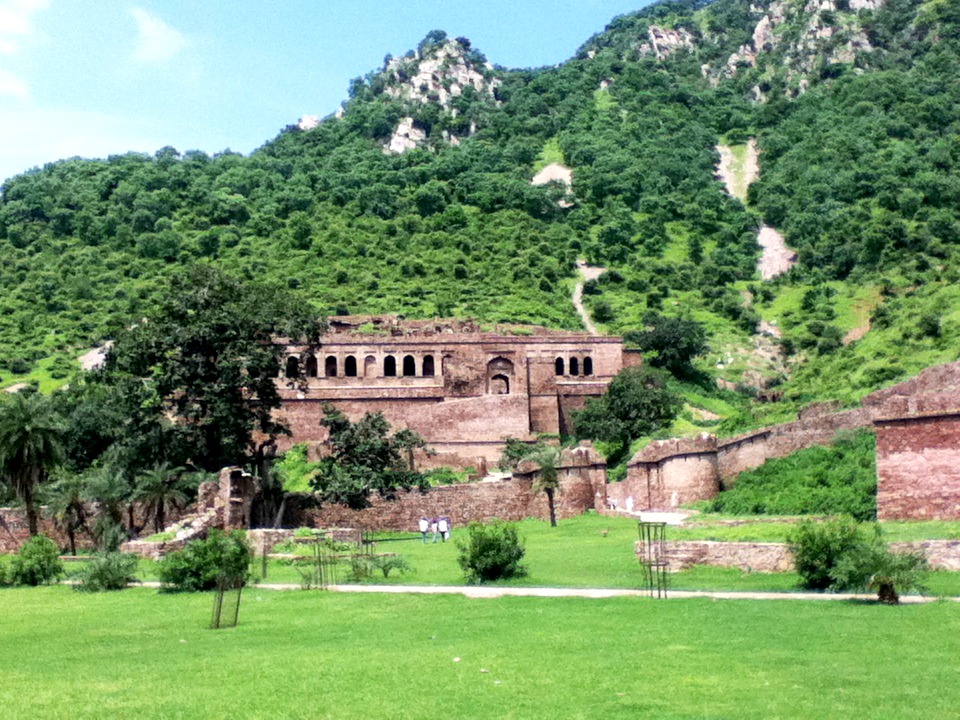Rameshwaram temple or the Ramanathaswamy temple is both a famous place of worship and a prominent tourist attraction in Rameshwaram. The shrine is dedicated to Lord Shiva and is one of India’s twelve jyotirlinga temples. If you have planned a trip to Rameshwaram temple from Madurai, here is your perfect travel guide for witnessing this iconic place down south.
Table of Contents
- About Rameshwaram Temple
- Rameshwaram Temple Darshan timings
- Rameshwaram Temple dress code
- Sevas and poojas at Rameshwaram Temple
- Rameshwaram temple entry fee and pooja charges
- Rameshwaram temple festivals
- Other attractions near Rameshwaram temple
- How to Plan a trip to Rameshwaram temple
- Hotels and Resorts near Rameshwaram temple
- Nearby roadtrips from Rameshwaram
About Rameshwaram Temple
Rameshwaram, a small town in Tamil Nadu, is home to the Rameshwaram Temple. The town holds special significance for Hindus because it is one of the four sacred Char Dhams or places of worship that every Hindu should visit at least once in their lives. The Rameshwaram Temple is a popular destination for Shaivites and Vaishnavites. It is one of the 227 Paadal Petra Sthalams where the three most respected Nayanars, Appar, Sundarar, and Tirugnana Sambandar, have performed to honour the temple.
Deity of Rameshwaram temple
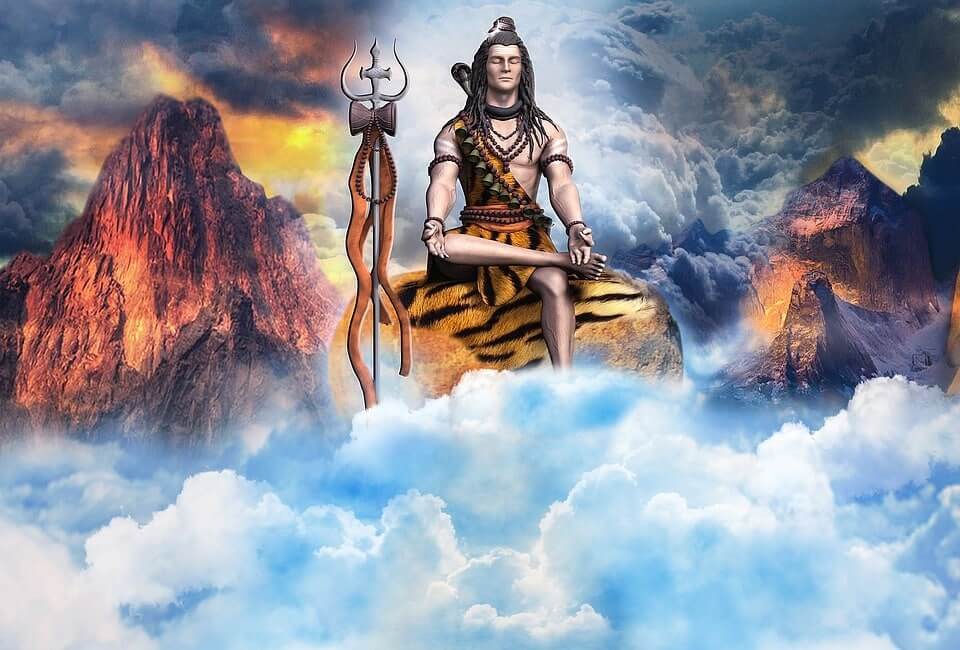
The principal deity of the Rameshwaram temple is Lord Shiva. According to mythology, Lord Rama himself installed the primary deity of Lord Shiva in this temple. Sethumadhava, Visalakshi, Mahaganapathi, Santanaganpathi, Nataraja, Parvathavardhini, Anjaneya, Ramanathswamy, Subrahmanya, and Mahalaxmi are among the other shrines in the temple.
Where is Rameshwaram temple located?
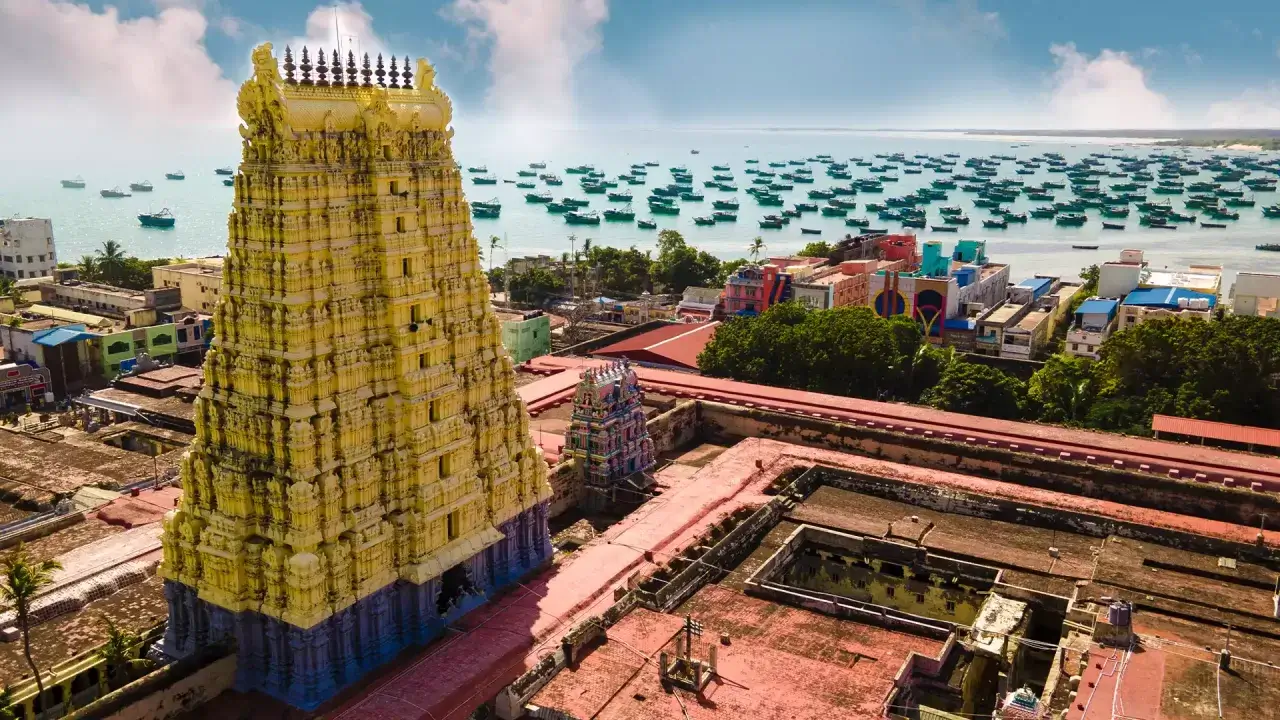
This religious town holds a huge significance in the epic Ramayana and has various Hindu temples and places of religious interest. Additionally, there some pristine beaches that make this town worth a visit.
History of Rameshwaram temple
Lord Rama is said to have worshipped Lord Shiva at this spot because he felt sorry for killing Ravana, a Brahmin and an ardent devotee of Lord Shiva. However, because the island lacked temples, he sent Lord Hanuman to deliver the Shivlinga from Mount Kailash. Due to the delay in Hanuman’s return, Sita built Lord Shiva’s shrine from the coastal sand. Later, when Hanuman returned from the Himalayas with Shiva Lingam, it was also erected beside the temple. As a result, there are two lingams in the hallowed temple: one made by Sita and known as the Ramalingam, and another carried from the Great Kailash by Lord Hanuman and known as the Vishwalingam.
Later, in the 15th century, King Udaiyan Sethupati and Nagoor Vaishyas built the temple. Tirumalaya Sethupathi separated the second portion of the temple’s southern part in the 16th century. The statues of Tirumalaya and his son stand at the temple’s entrance. The present Rameshwaram Temple design is thought to have been built in the 17th century. According to scholars, King Kizhavan Sethupathi directed the construction of the temple. Jaffna Raja of the Sethupathi Kingdom also made significant donations to the temple’s construction.
Best time to visit
Although the Rameshwaram temple is open all year round, it is better to appreciate its grandeur when the conditions—both the weather and the setting—are perfect for a wonderful outing. While July and August are the optimal months to visit the temple because of the pleasant monsoon landscape, Rameshwaram’s summer months are hot and muggy.
If you want to visit during Mahashivratri, travelling during February will also be excellent. October to March is ideal for touring the magnificent temple and the city because the weather is comfortable all day long. In terms of visiting the temple, the best times to go are early in the morning and late in the evening for the night ceremony.
Interesting Facts about Rameshwaram temple
People from all over the world flock to see the temple because it is so majestic and grand. Here are some more fascinating facts about the temple that you should be aware of.
- It is one of the 275 Paadal Petra Sthalams, and three of the most respected Nayanars (Saivite Saints), Appar, Sundarar, and Tirugnana Sambandar, have exalted it with their songs.
- Among all Hindu temples in India, this one has the longest corridor.
- The Temple is also one of the 12 Jyothirlinga temples, where Shiva is worshipped in the shape of a Jyotirlingam meaning “pillar of light”.
- The temple’s interior features extensive halls that span between massive colonnades on platforms more than five feet high.
- The intersection of the third corridor on the west and the paved path leading from the western gopuram to the Setumadhava shrine forms a unique structure in the shape of a chess board, and it is popularly known as Chokkattan Madapam.
- The outer set of corridors is reputed to be the longest in the world being about 6.9 m in height, 400 feet in each in the east and west and about 640 feet in north and south and inner corridors are about 224 feet in the east and west and about 352 feet each in north and south.
Rameshwaram Temple Darshan timings
Here are the temple darshan timings to help you plan your trip to the temple better.
| Rituals | Timings |
| Palliyarai Deepa Arathana (Morning wake up Aarti) | 5.00 am |
| Spadigalinga Deepa Arathana (Spathik Linga Aarti) | 5.10 am |
| Thiruvananthal Deepa Arathana (Lord Ananda Deep Aarti) | 5.45 am |
| Vila Pooja | 7.00 am |
| Kalasanthi Pooja (Kala Shanti Pooja) | 10.00 am |
| Uchikala Pooja (Midday Bhog Pooja) | 12.00 pm |
| Sayaratcha Pooja (Evening Pooja) | 6.00 pm |
| Arthajama Pooja (Pooja, Before Temple Close) | 8.30 pm |
| Palliyarai Pooja (Shayan Pooja & Temple close) | 8.45 pm |
| Morning Darshan | 5.00 am – 1.00 pm |
| Evening Darshan | 3.00 pm – 9.00 pm |
Rameshwaram Temple dress code
To visit the Rameshwaram temple, it is essential to dress in accordance with their guidelines. Male devotees are recommended to wear dhoti paired with a shirt, pyjama, or pants along with a shirt. For women and girls, the suggested attire includes saris, churidhar, or ‘pavadai’ with a half-sari.
It’s important to note that individuals wearing lungi, bermudas, jeans, or tight leggings will not be permitted inside the temple. Even if you are wearing a vest and briefs or a saree, entry into the main temple with wet clothing is not allowed. Therefore, it is advisable to carry an additional set of clothes to change into after performing “theertha snana” (ritual cleansing). There are designated areas provided for changing clothes within the temple premises.
Sevas and poojas at Rameshwaram temple
The following are the poojas taking place at the temple and their charges:
| Rituals | Price |
| Kalasa Abhishekam | Rs. 1000 /- |
| Sangabhishekam | Rs. 1000 /- |
| Rudrabhishekam | Rs. 1500 /- |
| Panchamirtha Abhishekam | Rs. 1000 /- |
| Swamy Sahasranama Archana | Rs. 200 /- |
| Ambal Sahasranama Archana | Rs. 200 /- |
| Ambal Kavacham | Rs. 200 /- |
Ramanathaswamy temple entry fee and pooja charges
The temple is open daily from 5 a.m. until 1 p.m. It reopens in the evening from 3 p.m. till 9 p.m. Darshan is available every day. Click this link here to know more details about all the poojas taking place in the temple. The following are the temple’s operating hours and other information on entry fees and puja charges:
Normal Darshan ticket
Ticket cost: Free
Ramanathaswamy temple special Darshan ticket
Ticket Cost: Rs.250 per person
Rameshwaram Spatika Linga Darshan ticket
Ticket Cost: Rs.50 per person.
Rameshwaram Abhishekam ticket
Ticket Cost: Rs.1500 per couple.
“Our chauffeur informed us that before paying our respects to Lord Shiva, we could take a bath in one of the temple’s 22 theerthams. Each of them has water with a distinct taste, temperature, and salinity, as well as medicinal powers. He also told us that it is claimed that Lord Rama created all of these wells during the time of fire arrows in the sand. We wouldn’t have known about the significance of each of these theerthams and the mythology behind them if it hadn’t been for him, so we’re extremely grateful for his recommendation.”
Meenakshi Sethupathi
* Pilgrims who wish to gift cash, gold or silver jewellery, or other costly items should present them to the temple Peishkar, who will arrange for them to be put at the feet of the Lord or Devi, enter them into the temple accounts, and provide suitable receipts.
Rameshwaram temple festivals
Some festivals are observed with greater glory and pomp in Rameshwaram. These festivals include:
- Masi Mahashivaratri – Mahashivaratri, considered one of the most auspicious festivals, is celebrated each year with great zeal and excitement throughout India. The celebration, also known as the “Grand Night of Shiva,” commemorates “overcoming darkness and ignorance in life.” Masi Mahashivarari is held in Rameshwaram Temple for ten days, from Mahasashti Krishnapatcham Maasi (February, March) to Mahakrishna Amavasai. Scores of people participate in the annual chariot procession during the Masi Mahashivaratri. Rishaba Vaahana Dharshan and the Mahasivarathri Abishekam are part of the ceremonies taking place during the festival.
- Mahalaya Amavasai – Mahalaya amavasya, also called Sarvapitri Amavasya, Pitra Moksha Amavasya or Pitru Amavasya is a Hindu tradition dedicated to the ‘pitrs’ or ancestors. The waning lunar phase or dark fortnight in September-October is called Mahalaya Paksha. Devotees throng to Rameswaram and the Agnitheertham sea near Ramanathaswamy Temple to pay tributes to their forefathers on this occasion.
- Thai Amavasay – Thai Amavasya is the no moon day in the Tamil Month of Thai (January – February) and is of great importance in Tamil culture. Thai Amavasai is dedicated to dead ancestors – siblings, parents and other relatives. Special prayers, rituals and offerings are made on the day for departed souls to rest in peace. Apart from the ceremonial pujas, prayer rituals to Navagrahas are completed at Devipattinam near Rameshwaram.
- Thirukalyanam – Thirukalyanam is one of the longest celebrations held at the Ramanathaswamy Temple, lasting seventeen days. It commemorates the Lord’s celestial wedding to Ambal, which is conducted in Kumba Lagnam. Ambal would be led to the Thabasu mandapam for the betrothal ceremony when Swamy and Ambal would exchange garlands.
Driver suggested places to visit near Rameshwaram temple
- Gandhamadana Parvatham – Gandhamadana Parvatham is the highest point of Rameswaram and bears the imprint of Lord Rama’s feet on a chakra. The entire island of Rameswaram is visible from this point, located 3 km to the north of the Rameshwaram temple.
- Villundi theertham – This tranquil beachfront features a wide sandy expanse, clear waters and a revered freshwater spring, located about 7 km from Rameshwaram temple on the way to Pamban.
- Kothanda Ramar Temple – Kothanda Ramar Temple is where Vibishana, Ravana’s brother, surrendered before Lord Rama and the temple is located 12 km away from Rameswaram.
- Dhanushkodi Beach – This is a serene beach ideal to spend a relaxing day/evening at. With the Bay of Bengal on one side and the Indian Ocean on the other, Dhanushkodi Beach is a good way to enjoy solitude.
- Ariyaman Beach – Unlike Dhanushkodi Beach, Ariyaman Beach is famous for boating and water sports. If you are travelling with children, then this can be a good option since there is a museum, an aquarium, and a children’s park near the beach.
- Pamban Bridge – This is probably the first sea bridge in India connecting the mainland with Rameshwaram. A railway track and road run parallel to each other. The bridge has a functional double-leaf bascule section that opens to allow boats/ships through. A long drive on this road will be memorable.
- Rama Setu – The Rama Setu or Adam’s Bridge connects the Dhanushkodi tip to Mannar Island in Sri Lanka. This is a mesmerizing collection of limestone shoals that are arranged in a chain and stretch way into the ocean.
Driver suggested places to eat in Rameshwaram
The cuisine of Rameshwaram mainly sticks to regional delicacies flavoured with hot spices and condiments. As a vibrant coastal temple town, Rameshwaram’s food culture is known both for its vegetarian cuisine and its seafood. These are some of the best places you can go to explore the food of Rameshwaram.
- Sri Murugan Mess, #32 Tourism Hotel, N Car St, Rameswaram
- Vitamin R (Sea view), C/O Hotel Ragavendra 21/26-A1, Agasthiyar Theertham St, near Agni Theertham
- APS Seafood & Fast Food Restaurant, 18/592, Pathrakali Amman Kovil street
- The Hotel Shree Nellai Madura, Middle St, Rameswaram
- Lootel Smart Restroom Cafe, V. O. C. Nagar, Agneetheertham, Rameswaram
How to plan a trip to Rameshwaram temple
There is much more to Rameshwaram than just temples. Rameshwaram’s vibrant and serene beaches are a delight to meander through, and for an Indian city, this quiet town is an ideal retreat for the mind and the soul. Here are a few pointers for organising a visit to the temple.
How to reach Rameshwaram
Rameshwaram where the Ramanathaswamy Temple is located in Tamil Nadu is a temple town that has excellent road, rail, and air connections to the majority of South Indian towns. Here are instructions on how to reach Rameshwaram Temple.
By Air
The nearest airport is Madurai (163 km), connected to various domestic and international airports. Madurai Airport is the only airport in the region and the best option for air travelers is to stop in Madurai and book an airport taxi to Rameshwaram.
By Rail
Rameswaram is linked by rail with Chennai, Madurai, Coimbatore, Trichy, Tanjore, and other prime cities of South India. The 2 km long Indira Gandhi Bridge connects the island of Rameswaram with the mainland of Mandapam, the gateway to Rameshwaram.
By Road
Rameshwaram is well-connected with most cities in Tamil Nadu. You can reach Rameshwaram from the following cities with ease:
- Cab from Madurai to Rameshwaram: 170-220 km (depending on the route)
- Cab from Thanjavur to Rameshwaram: 230-330 km (depending on the route)
- Cab from Tiruchirapalli to Rameshwaram: 270-350 km (depending on the route)
- Cab from Chennai to Rameshwaram: 500-558 km (depending on the route)
- Cab from Coimbatore to Rameshwaram: 420-441 km (depending on the route)
- Cab from Bangalore to Rameshwaram: 580-606 km (depending on the route)
Hotels and Resorts near Rameshwaram temple
| Place Name | Address | Phone Number |
| Hyatt Place Rameswaram | Madurai, Dhanushkodi NH Road, Rameswaram, Tamil Nadu 623526 | NA |
| JKR Resort & Spa | D. No.: 1A/1, near Kaatupillaiyar Temple, Rameswaram, Tamil Nadu 623526 | 04573 231 234 |
| Hotel Rameswaram Grand | Railway Feeder Rd, opp. to Railway Station, Rameswaram, Tamil Nadu 623526 | 04573 222 233 |
| Daiwik Hotels Rameswaram | 82 B (1), Madurai-Dhanushkodi, NH- 49, near Bus stand, Rameswaram | 080 2263 2222 |
| Hotel Panchavarnaa | 20, 17-2, Madasamy Kovil St, near Saraswathi Primary School, Rameswaram | 075988 93363 |
Nearby road trips from Rameshwaram
|
Destination |
Distance | Duration |
| Rameshwaram to Madurai | 173 Kms | 3 hrs |
| Rameshwaram to Alangudi | 202 Kms | 4 hrs |
| Rameshwaram to Kanjanoor | 270 Kms | 5 hrs |
Useful links:
Last Updated on December 16, 2024 by V Subhadra
